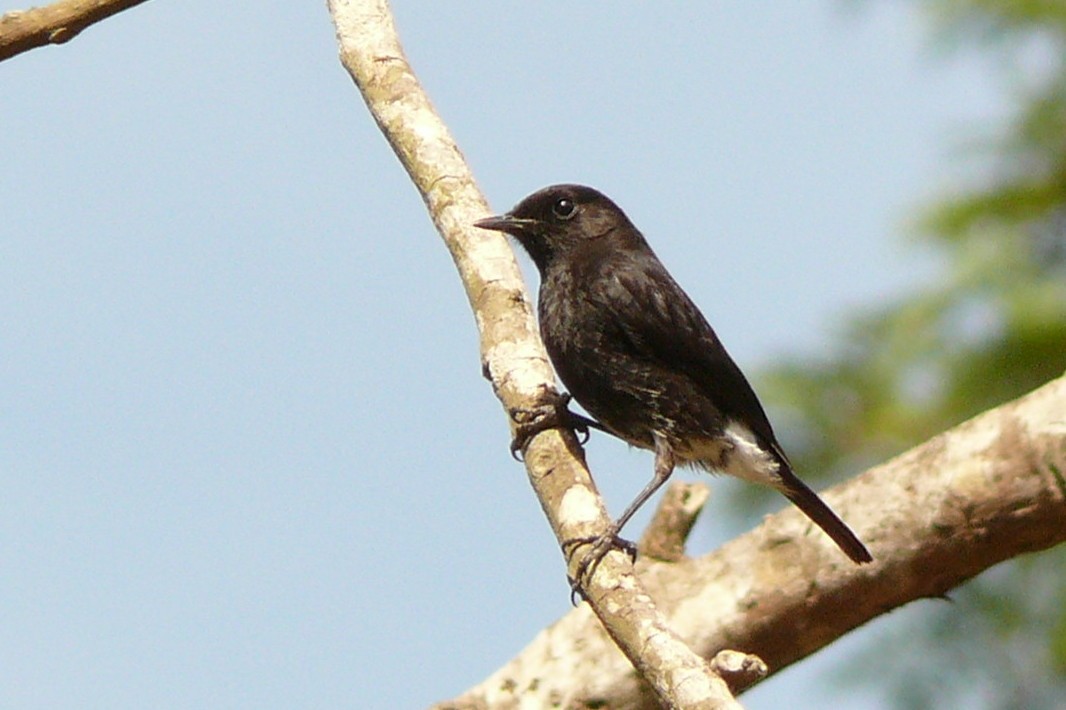Pied Bushchat
A species of Stonechats and Bush Chats Scientific name : Saxicola caprata Genus : Stonechats and Bush Chats
Pied Bushchat, A species of Stonechats and Bush Chats
Botanical name: Saxicola caprata
Genus: Stonechats and Bush Chats
Content
Description People often ask General Info
 Photo By Haplochromis , used under CC-BY-SA-3.0 /Cropped and compressed from original
Photo By Haplochromis , used under CC-BY-SA-3.0 /Cropped and compressed from original Description
The pied bush chat is slightly smaller than the Siberian stonechat, Saxicola maurus, although it has a similar dumpy structure and upright stance. The male is black except for a white rump, wing patch and lower belly. The iris is dark brown, the bill and legs black. The female is drab brown and slightly streaked. Juveniles have a scaly appearance on the underside but dark above like the females. 
Size
14 cm
Nest Placement
Shrub
Feeding Habits
Pied Bushchat, primarily an insectivore, forages for a diverse array of insects and other small invertebrates. Its hunting technique involves perching conspicuously before pouncing on prey, typically during daylight hours. There are no unique dietary adaptations or preferences widely documented for this species.
Habitat
The pied Bushchat resides in tropical regions and thrives in open landscapes, including grasslands, scrubby hills, and cultivated areas. Adapted to both natural and human-modified environments, they are present in willow plantations, savannas, and scrub jungles, as well as riverbeds and moist fields with reeds. Geographically widespread, they inhabit altitudes from sea level up to 2400 meters in the Himalayas.
Dite type
Insectivorous
People often ask
General Info
Feeding Habits
Bird food type
Behavior
The breeding season is mainly February to August with a peak in March to June. The nest is built in a hole in a wall or similar site lined with grass and hair, and 2-5 eggs are laid. Paired males did not reduce their dawn singing behaviour when their mates where trapped and temporarily excluded from the territory. This study suggests that males use dawn chorus to mediate social relationships with neighbouring males to proclaim an established territory. 
Distribution Area
A ringed individual of subspecies rossorum has been recovered from Israel. The populations in India also appear to show seasonal movements but the patterns are unclear. Subspecies bicolor is found in peninsular India in winter. In Karwar on the western coast, it is said to appear in October and stay till May but not seen during the rainy season. Said to be absent in the Baroda district of Gujarat from April to September. 
Species Status
Not globally threatened.
Scientific Classification
Phylum
Chordates Class
Birds Order
Perching birds Family
Old world flycatchers Species
Pied Bushchat